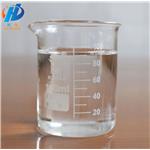Description
Dihydromyrcenol is a colorless liquid with a fresh citrus-like odor and a lavender note. It is obtained from 3,7-dimethyl-1,6- octadiene (citronellene), the pyrolysis product of cis-pinane and can be prepared by three different processes: (i) by addition of hydrogen chloride and subsequent hydrolysis of the resulting 2,6-dimethyl-2-chloro-7-octene; or (ii) by addition of formic acid and subsequent saponification of the resulting dihydromycrenyl formate; or (iii) by direct hydroxylation with 60–80% sulfuric acid.Dihydromyrcenol is used in fine fragrances as well as in soap and detergent perfumes for fresh lime and citrus-like floral notes.
Chemical Properties
Clear Colorless liquid, insoluble in water, soluble in 4-6 volumes of 55% ethanol or 1-2 volumes of 70% ethanol, also soluble in oily fragrances. The aroma is sweet and powerful, with fresh and spicy citrus, pine and cypress, lavender, fruity, floral, sweet and sour aromas, and has white lemon and cologne flavors.
Occurrence
Has apparently not been reported to occur in nature.
Uses
Dihydromyrcenol is an organic compound from the group of the acyclic terpenoidal alcohols. It is a fragrance with a powerful, fresh, lavender like, sweet citrus and floral fragrance, which is synthetically prepared. The pure substance appears as a colorless viscous liquid, which is practically insoluble in water.
Preparation
Dihydromyrcenol is prepared by addition of dihydromyrcene (generated from the cleavage of pinane, the hydrogenation product of pinene), with water and formic acid under acid catalysis.
By controlled, partial hydrogenation of myrcenol (Arctander, 1969).



